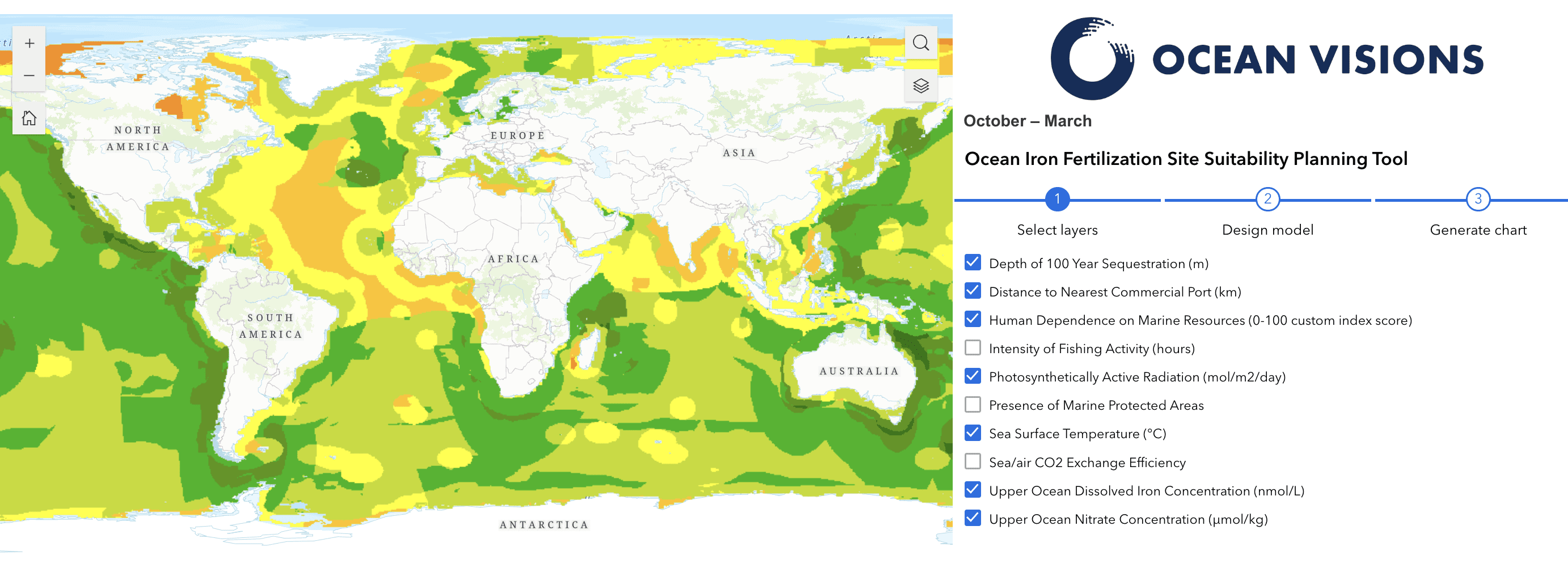Ocean Iron Fertilization Site Suitability Planning Tool
Ocean Iron Fertilization (OIF) has been recognized as a potential strategy to draw down and safely store atmospheric carbon dioxide. Yet after nearly 30 years of scientific investigation, including both field trials and modeling studies, estimates of the potential for OIF to contribute to carbon dioxide removal at climate-relevant scales are still inconclusive.
A new generation of controlled field trials, coupled with better computational models, is needed to answer the remaining critical scientific questions regarding durability of carbon sequestration and associated environmental impacts of ocean iron fertilization.
In order to support the design and siting of necessary field trials, Ocean Visions has partnered with Environmental Systems Research Institute (Esri) to create a first-of-its-kind Ocean Iron Fertilization Site Suitability Planning Tool.
This interactive tool includes oceanographic data layers (e.g., temperature, nutrients, light), social data layers (e.g, dependence on marine resources, presence of marine protected areas, fishing intensity), and logistical (proximity to commercial ports) to create a multidimensional and holistic picture of possible sites.
Acknowledgements
Support for the Ocean Iron Fertilization Site Suitability Planning Tool comes from Esri, a member of the Ocean Visions Network, which created the tool with guidance and input from six expert advisors, facilitated by Ocean Visions:
- Ken Buesseler (Woods Hole Oceanographic Institution)
- Fei Chai (University of Maine – School of Marine Sciences)
- Sara Nawaz (Institute for Responsible Carbon Removal – American University)
- Akash Rastogi (Dalhousie University – Ocean Frontier Institute)
- Steffen Swoboda (GEOMAR Helmholtz Centre for Ocean Research Kiel)
- Romany Webb (Columbia University – Sabin Center for Climate Change Law)
Questions? Comments? Please email info@oceanvisions.org
Financial support for the OIF Site Suitability Planning Tool comes from the Astera Institute.
